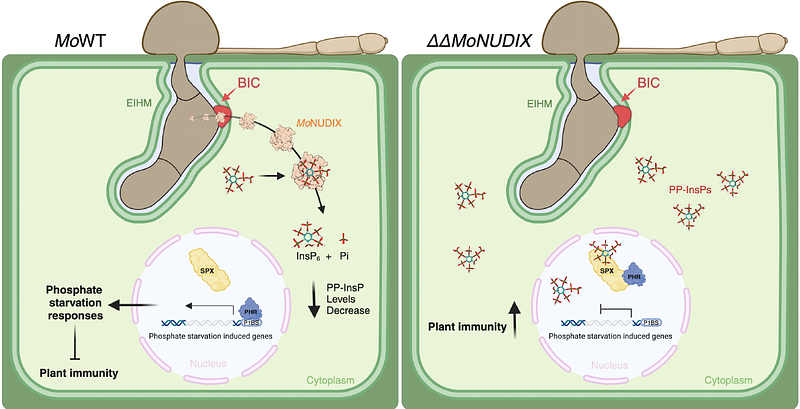Plant pathogenic fungi hijack phosphate starvation signaling with conserved enzymatic effectors

Plant pathogenic fungi hijack phosphate starvation signaling with conserved enzymatic effectors
McCombe, C. L.; Wegner, A.; Zamora, C. S.; Casanova, F.; Aditya, S.; Greenwood, J. R.; Wirtz, L.; de Paula, S.; England, E.; Shang, S.; Ericsson, D. J.; Oliveira-Garcia, E.; Williams, S. J.; Schaffrath, U.
AbstractPhosphate availability modulates plant immune function and regulates interactions with beneficial, phosphate-providing, microbes. Here, we describe the hijacking of plant phosphate sensing by a family of Nudix hydrolase effectors from pathogenic Magnaporthe oryzae and Colletotrichum fungi. Structural and enzymatic analyses of the Nudix effector family demonstrate that they selectively hydrolyze inositol pyrophosphates, a molecule used by plants to monitor phosphate status and regulate starvation responses. In M. oryzae, gene deletion and complementation experiments reveal that the enzymatic activity of a Nudix effector significantly contributes to pathogen virulence. Further, we show that this conserved effector protein family induces phosphate starvation signaling in plants. Our study elucidates a molecular mechanism, utilized by multiple phytopathogenic fungi, that manipulates the highly conserved plant phosphate sensing pathway to exacerbate disease.